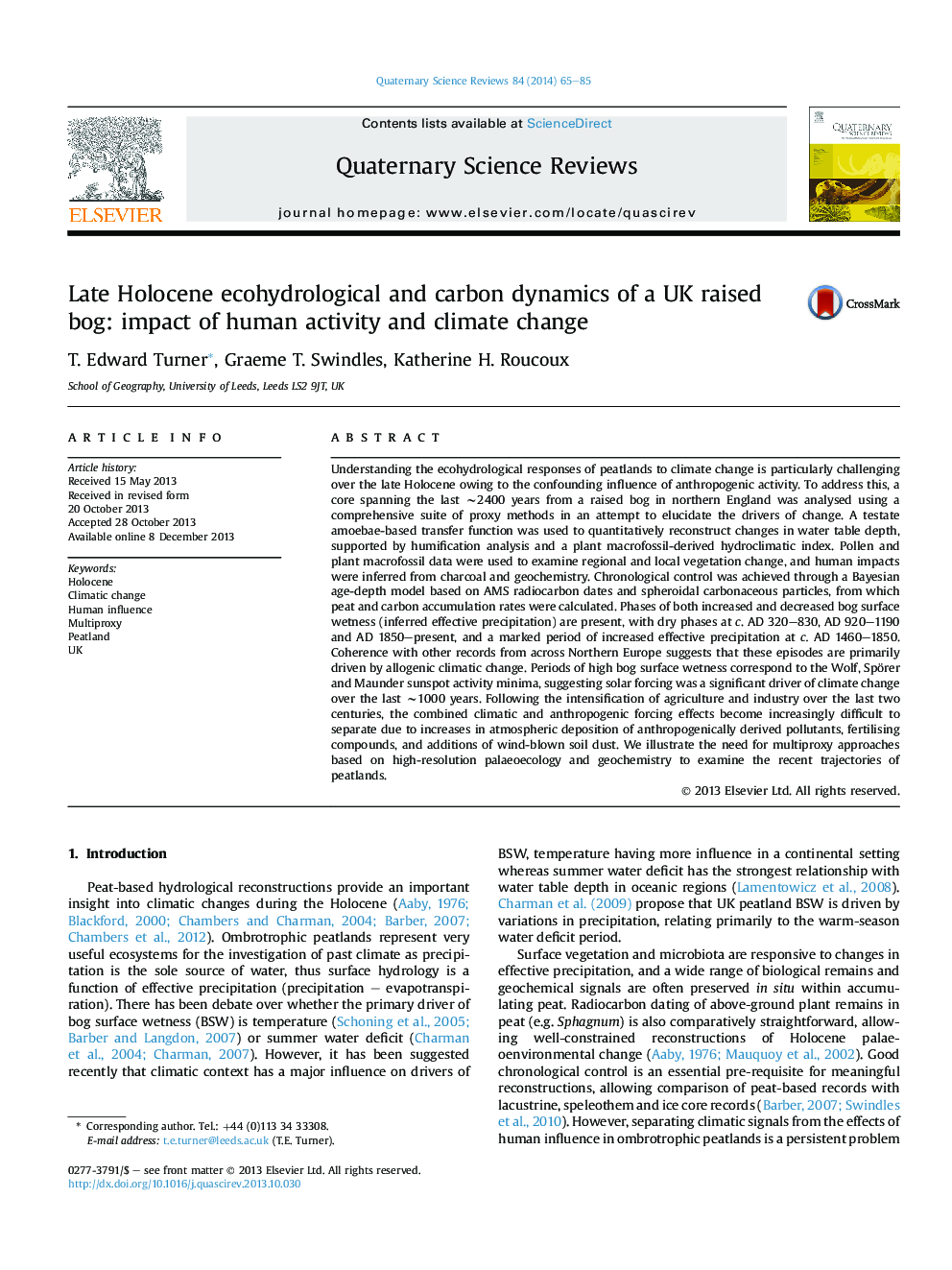| کد مقاله | کد نشریه | سال انتشار | مقاله انگلیسی | نسخه تمام متن |
|---|---|---|---|---|
| 6446576 | 1640850 | 2014 | 21 صفحه PDF | دانلود رایگان |
عنوان انگلیسی مقاله ISI
Late Holocene ecohydrological and carbon dynamics of a UK raised bog: impact of human activity and climate change
ترجمه فارسی عنوان
دیرهنگام اکو هیدرولوژیک و کربنات دیررس هلوتن در انگلستان باعث افزایش غضروف شد: تاثیر فعالیت های انسانی و تغییرات آب و هوایی
دانلود مقاله + سفارش ترجمه
دانلود مقاله ISI انگلیسی
رایگان برای ایرانیان
کلمات کلیدی
هولوسن، تغییرات آب و هوایی، نفوذ انسان، چند پروکسی زمین لرزه، انگلستان،
موضوعات مرتبط
مهندسی و علوم پایه
علوم زمین و سیارات
زمین شناسی
چکیده انگلیسی
Understanding the ecohydrological responses of peatlands to climate change is particularly challenging over the late Holocene owing to the confounding influence of anthropogenic activity. To address this, a core spanning the last â¼2400 years from a raised bog in northern England was analysed using a comprehensive suite of proxy methods in an attempt to elucidate the drivers of change. A testate amoebae-based transfer function was used to quantitatively reconstruct changes in water table depth, supported by humification analysis and a plant macrofossil-derived hydroclimatic index. Pollen and plant macrofossil data were used to examine regional and local vegetation change, and human impacts were inferred from charcoal and geochemistry. Chronological control was achieved through a Bayesian age-depth model based on AMS radiocarbon dates and spheroidal carbonaceous particles, from which peat and carbon accumulation rates were calculated. Phases of both increased and decreased bog surface wetness (inferred effective precipitation) are present, with dry phases at c. AD 320-830, AD 920-1190 and AD 1850-present, and a marked period of increased effective precipitation at c. AD 1460-1850. Coherence with other records from across Northern Europe suggests that these episodes are primarily driven by allogenic climatic change. Periods of high bog surface wetness correspond to the Wolf, Spörer and Maunder sunspot activity minima, suggesting solar forcing was a significant driver of climate change over the last â¼1000 years. Following the intensification of agriculture and industry over the last two centuries, the combined climatic and anthropogenic forcing effects become increasingly difficult to separate due to increases in atmospheric deposition of anthropogenically derived pollutants, fertilising compounds, and additions of wind-blown soil dust. We illustrate the need for multiproxy approaches based on high-resolution palaeoecology and geochemistry to examine the recent trajectories of peatlands.
ناشر
Database: Elsevier - ScienceDirect (ساینس دایرکت)
Journal: Quaternary Science Reviews - Volume 84, 15 January 2014, Pages 65-85
Journal: Quaternary Science Reviews - Volume 84, 15 January 2014, Pages 65-85
نویسندگان
T. Edward Turner, Graeme T. Swindles, Katherine H. Roucoux,
